Artists
Artistic Director
-
- Pierre Huyghe
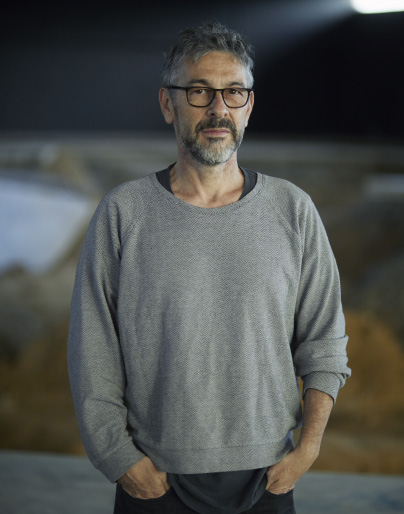
Photo credit: Ola Rindal
-
Born in 1962, Paris. Lives in New York.
Huyghe’s works often present themselves as complex systems characterised by a wide range of life forms, inanimate things and technologies. His constructed organisms combine not only biological, technological and fictional elements, they also produce an immersive, constantly changing environment, in which humans, animals and nonbeings learn, evolve and grow. In 2001, he received a Special Award from the Jury of the Venice Biennale. He was also awarded the Solomon R. Guggenheim Museum’s Hugo Boss Prize in 2002. In 2017, Huyghe was awarded the Nasher Prize for Sculpture. Recent major projects /solo exhibitions include “UUmwelt” at the Serpentine Gallery, London (2018), “After Alife Ahead” at Skulptur Projekte Münster (2017), “The Roof Garden Commission” at the Metropolitan Museum of Art, New York(2015), “A Season Dedicated to Pierre Huyghe” at The Artist’s Institute, New York (2014). In 2013-2014, a major retrospective of Huyghe’s work traveled from the Centre Pompidou, Paris to the Ludwig Museum, Cologne and to Los Angeles County Museum of Art, California. His work has also been featured in group exhibitions including "Tino Sehgal" at the Palais de Tokyo, Paris (2016), "Saltwater: A Theory of Thought Forms" at the 14th Istanbul Biennial (2015), “documenta13” in Kassel (2012) among others. -
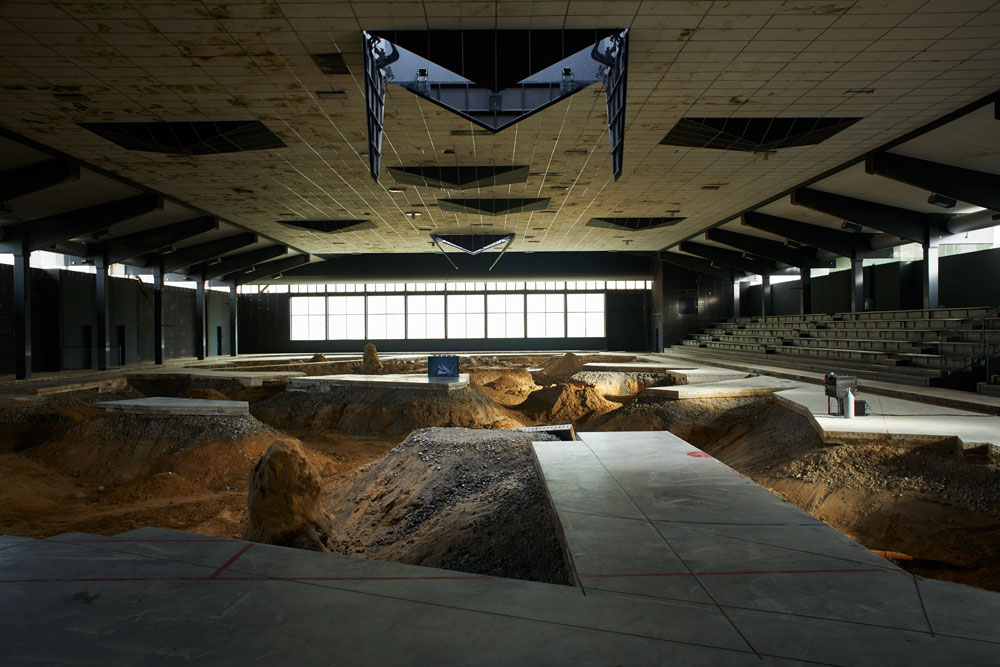
Pierre Huyghe
After ALife Ahead, 2017
Courtesy of the artist; Marian Goodman Gallery, New York;
Esther Schipper, Berlin;
Hauser & Wirth, Londres, Galerie Chantal Crousel, Paris
Photo: Ola Rindal
- Pierre Huyghe
Artists
-
- Tarek Atoui
-
Born in 1980, Lebanon. Lives in Paris.
Atoui moved to France in 1998 where he studied sound art and electroacoustic music. In 2008, he worked as artistic director of the STEIM Studios in Amsterdam, a centre for the research and development of new electronic musical instruments. In 2019, he participates in the 59th Venice Biennale and the Yorkshire Sculpture International. In the past, Atoui has presented his work internationally at the Sharjah Biennial in the United Arab Emirates (2009 and 2013); the New Museum of Contemporary Art in New York (2010); Mediacity Biennial in Seoul (2010); the Haus Der Kunst in Munich (2010); Performa 11 in New York (2011); documenta 13 in Kassel, Germany (2012); the Serpentine Gallery in London (2012); and the 8th Berlin Biennial (2014); the Kunstenfestivaldesarts in Brussels (2017); The Mirrored Gardens Space in Guangzhou, China (2017); the NTU Centre for Contemporary Art in Singapore (2018) and Garage Moscow (2018). In 2016 he presented the “Reverse Collection” one of his leading projects at the Tate Modern in London and was appointed co-artistic directors of the 2016 Bergen Assembly, a triennial for contemporary art in Norway. -
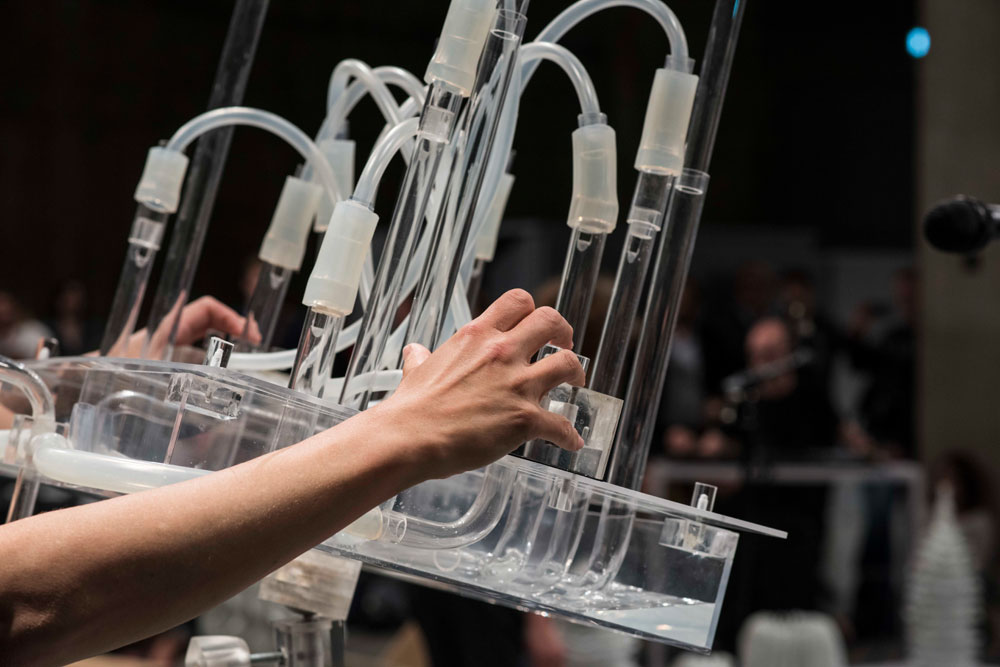
Tarek Atoui
The Reverse Collection, 2014
at Tate Modern during opening week
Copyright : Tarek Atoui,
Photo : Tate Photography
-
- Matthew Barney
-
Born in 1967, San Francisco. Lives in New York.
Barney attended Yale University, receiving his BA in 1989. From his earliest work, Barney has explored the transcendence of physical limitations in a multimedia art practice that incorporates film, sculpture, photography, and drawing. His notable projects include “River of Fundament”, 2014, a film-opera in three acts; “The CREMASTER Cycle”, a five-part project made from 1994-2002; and his ongoing series “DRAWING RESTRAINT” (1989 – present). Barney’s work has been the subject of major exhibitions at museums around the world, including the Solomon R. Guggenheim Museum, New York; San Francisco Museum of Modern Art; 21st Century Museum of Contemporary Art, Kanazawa, Japan; and Haus der Kunst Munich. Barney’s most recent project, “Redoubt”, 2016-2019, comprises a feature-length film, monumental sculptures, and electroplated and engraved drawings. “Redoubt” is the subject of an exhibition organised by the Yale University Art Gallery, New Haven; traveling to UCCA, Beijing, in September 2019; and the Hayward Gallery, London in 2020. -
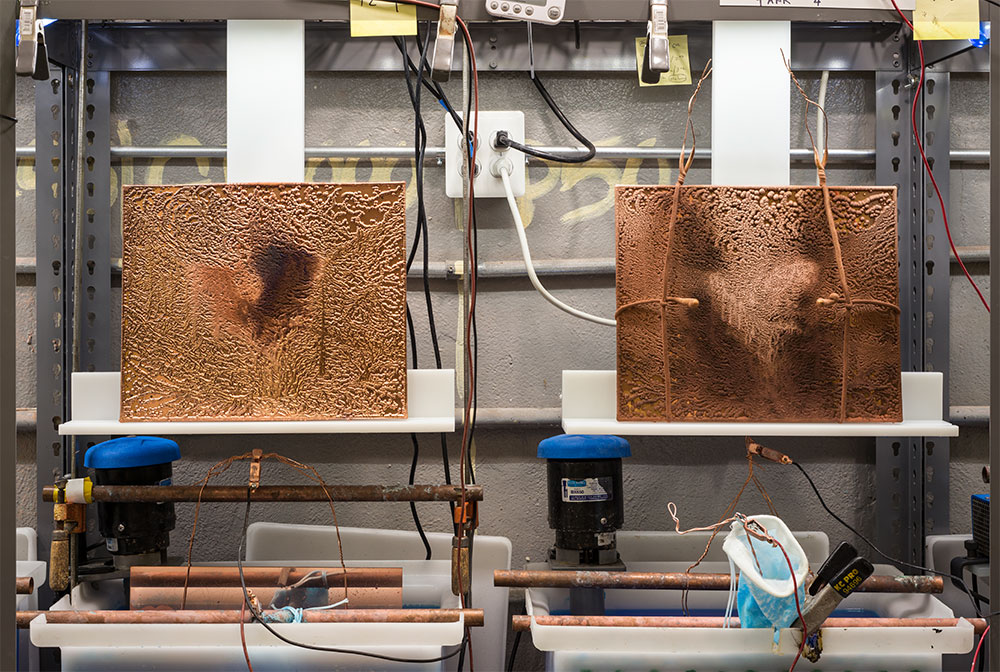
Matthew Barney
Bayhorse: State four and Bayhorse: State five in electroplating room, 2018
Courtesy of the artist and Gladstone Gallery, New York and Brussels
Photo: Paul Kennedy
-
- Etienne Chambaud
-
Born in 1980, Mulhouse, France. Lives in Paris.
Chambaud’s multimedia practice is interested in the general problem of the relations between continuities and discontinuities, and, in particular, with the question of the limits between ideas, matter, forms, objects, contexts, apparatuses and categories. He graduated from Ecole Cantonale d’Art de Lausanne (2003) and Villa Arson, Nice (2005). He was part of the postgraduate program of Ecole Nationale Supérieure des Beaux de Lyon in 2005. Since 2018 he has been conducting a doctoral research entitled “Ecology of Separation” in the SACRe program of PSL University and Ecole Nationale Supérieure des Beaux-Arts, Paris. Selected solo exhibitions include “Negative Knots”, Kunsthalle Mulhouse (2018); “INCOMPLT” (2016), “The Naked Parrot” (2013), “On Hospitality” (2010), LABOR, Mexico City; “Undercuts”, Forde, Geneva (2012); “Contre-Histoire de la Séparation” at CIAP, Vassivière; “Objets Rédimés, ”Bugada & Cargnel, Paris; “The Decapitated Museum”, Sies + Höke, Düsseldorf; “The Sirens’ Stage”, David Roberts Art Foundation, London, “Le Stade des Sirènes”, Kadist Art Foundation, Paris; “Lo stato delle sirène”, Nomas Foundation, Rome (all 2010); “Color Suite”, Palais de Tokyo, Paris (2009). His works have been featured in many group exhibitions including at Whitechapel Gallery, London; Centre Pompidou, Paris; Fondation Cartier, Paris; MAMCO, Geneva; CCA Wattis, San Fransisco; Art Unlimited, Art Basel, Basel; MOCA, Detroit; Marian Goodman Gallery, NYC; Casey Caplan Gallery, NYC; Museum Ostwall im Dortmunder, Dortmund; Villa Arson, Nice; Lyon Biennale. -
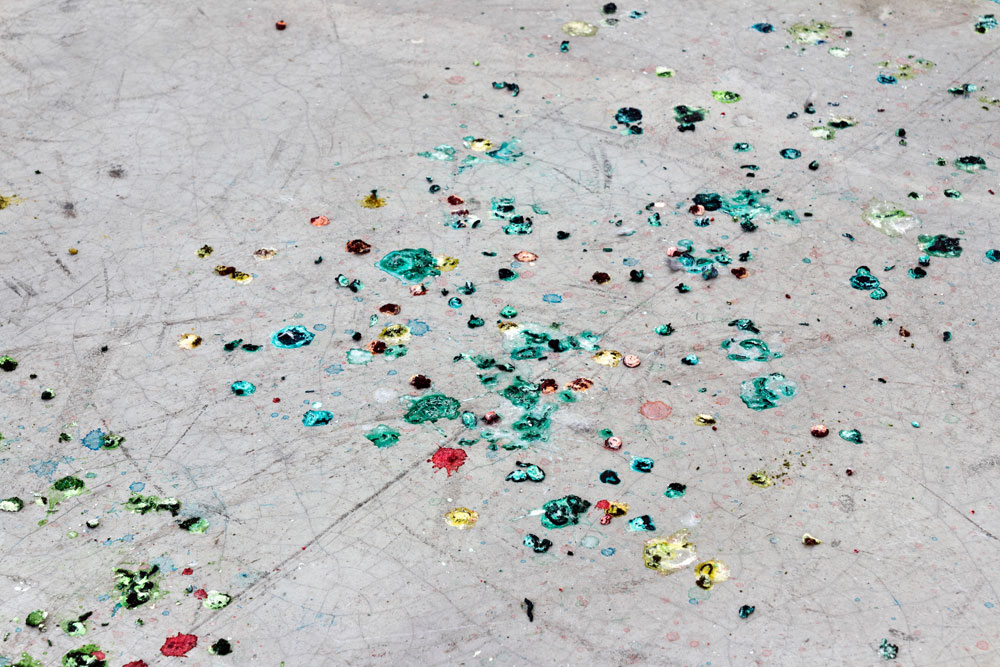
Etienne Chambaud
Additive Expression, 2013
Courtesy of the Artist and Labor, CDMX
-
- Paul Chan
-
Born in 1973, Hong Kong. Lives in New York.
Chan is an artist, writer, and publisher. Chan is the winner of the Hugo Boss Prize in 2014, a biennial award honoring artists who have made a visionary contribution to contemporary art. His work has been exhibited widely in many international shows including: “Plato in LA”, Getty Villa, Los Angeles (2018); documenta 13, Kassel (2012); “Before The Law”, Ludwig Museum, Cologne, 2011-12; “Making Worlds”, 53rd Venice Biennale (2009); “Medium Religion”, ZKM, Karlsruhe, 2008; “Traces du sacrê”, Centre Pompidou, Paris (2008); 16th Biennale of Sydney (2008); 10th International Istanbul Biennial (2007); and the Whitney Biennial, Whitney Museum of Art, New York (2006). A mid-career survey entitled Selected Works was mounted by Schaulager in Basel, Switzerland. Solo exhibitions include: “Odysseus and The Bathers”, The Cycladic Museum of Art, Athens (2018); “My Laws are My Whores”, The Renaissance Society and the University of Chicago, Chicago (2009); “Paul Chan: Three Easy Pieces”, Carpenter Center for the Visual Arts, Harvard University, Cambridge (2008); “Paul Chan: The 7 Lights”, Serpentine Gallery, London and New Museum, New York (2007‒2008). In 2007, Chan collaborated with the Classical Theatre of Harlem and Creative Time to produce a site-specific outdoor presentation of Samuel Beckett’s play. The project was entitled Waiting for Godot in New Orleans. Chan’s essays and interviews have appeared in Artforum, Frieze, Flash Art, October, Tate etc, Parkett, Texte Zur Kunst, Bomb, and other magazines and journals. Chan founded the New York based independent press Badlands Unlimited in 2010. -
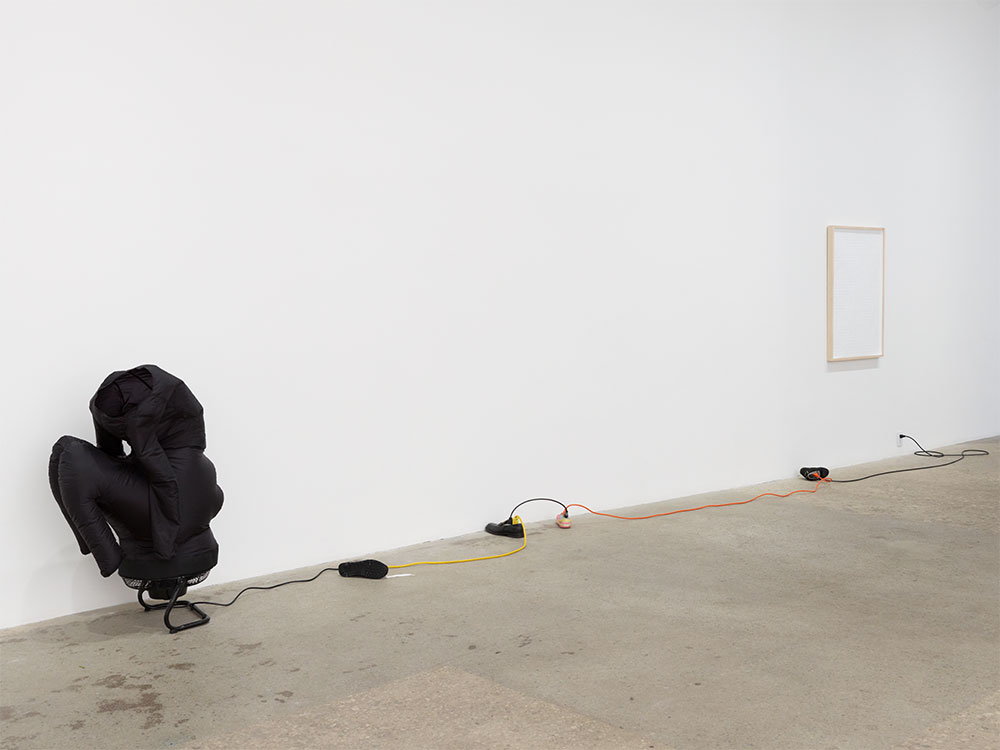
Paul Chan
Le Baigneur 1, 2016
Courtesy of the artist and Greene Naftali, New York
Photo: Elisabeth Bernstein
-
- Ian Cheng
-
Born in 1984, Los Angeles. Lives in New York.
Cheng makes simulations that explore the nature of mutation and our capacity to relate to change. Drawing on principles of video game design, improve, and cognitive science, Cheng’s virtual ecosystems are populated with characters governed by competing models of artificial intelligence (AI). Each attempt to perpetuate its approach amidst otherworldly environmental conditions. What emerges is an endless, unpredictable stream of artificial life, at times familiar, uncertain, boring, surprising ̶ what Cheng calls “art with a nervous system.” Recent solo exhibitions include Serpentine Galleries, London (2018); MoMA PS1, New York (2017); Carnegie Museum of Art, Pittsburgh (2017); Migros Museum, Zürich (2016); Fondazione Sandretto Re Rebaudengo, Turin (2015); Pilar Corrias Gallery, London (2015), the Triennale di Milano (2014). Group exhibitions include Louisiana Museum, Copenhagen (2017); Yokohama Triennale (2017); Hirshhorn Museum and Sculpture Garden, Washington D.C. (2016); Whitney Museum of American Art, New York (2016); Taipei Biennale (2014); 12th Lyon Biennale (2013); Sculpture Center, New York (2012). -
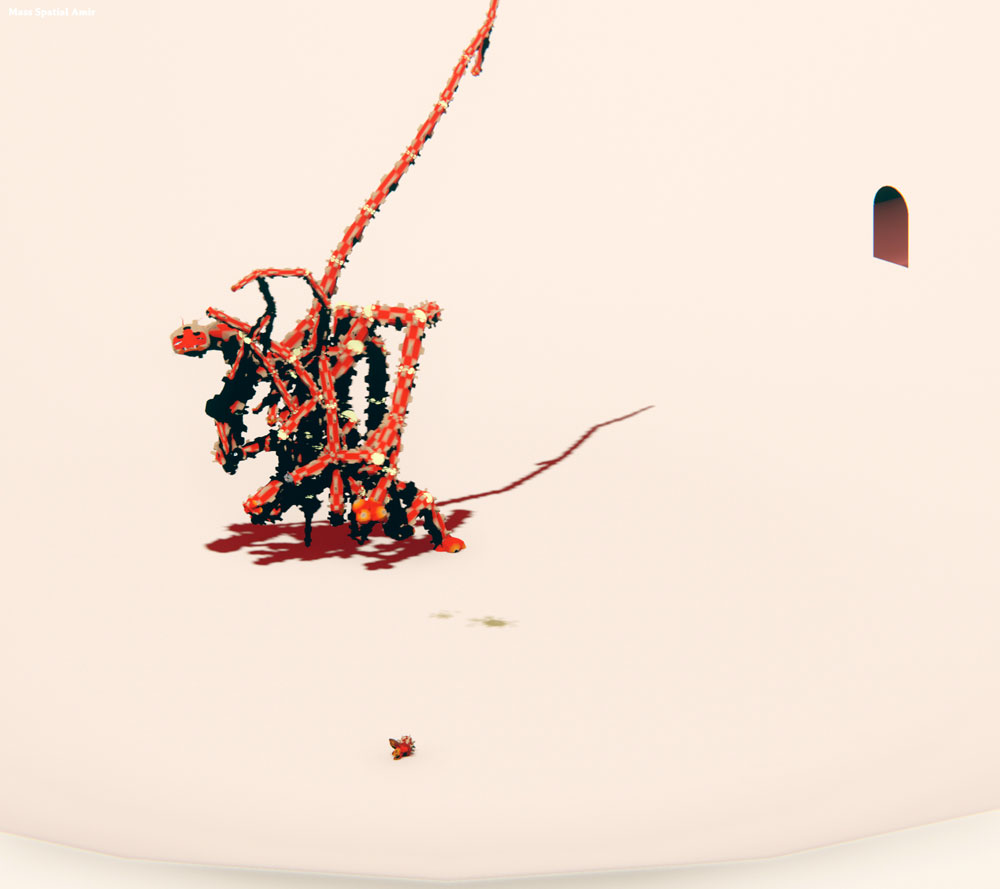
Ian Cheng
BOB (Bag of Beliefs)
2018-2019
courtesy of the artist, Pilar Corrias,
Gladstone Gallery
-
- Melissa Dubbin & Aaron S. Davidson
-
Melissa Dubbin: Born in 1976, Las Cruces, USA. Lives in New York.
Aaron S. Davidson: Born in 1971, Madison, USA. Lives in New York.
Dubbin and Davidson’s work has been described as addressing “processes of transmission and reception, interference and transference” often seeking to materialise immaterial or ephemeral states of matter (sound, light, air, time). They have co-authored a body of works producing forms, objects, images and experiences, equally incorporating the mediums of photography, video, sound, performance, sculpture and artists books since they began working together in 1998. Dubbin and Davidson were recently chosen as the first artists to participate in the year long artist-in-residence program of the Pinault Collection (2016). Recent solo exhibitions include Six Degrees of Freedom at Untilthen, Paris (2017), “Poétique des sciences”, Le Fresnoy, Tourcoing, France (2017), “Nobody Shoots a Broken Horn in Early Spring” at Campoli Presti, Paris (2016); Treize, Paris (2014); Audio Visual Arts (AVA), New York, (2013); Henie Onstad Kunstsenter, Høvikodden, Norway (2012); and Nýló, The Living Art Museum, Reykjavik, Iceland (2012). Recent group exhibitions include “Esma'/Listen” at Beirut Art Center (2016); “Bitter Sweet Symphony”, Untilthen, Paris (2016), Paris, Co-Workers, Bétonsalon, Paris (2015); “Some Artists’ Artists” at Marian Goodman Gallery, New York (2014); The Artist’s Institute, New York (2014); “Art of Its Own Making” at The Pulitzer Foundation for the Arts, St. Louis, MI (2014); “The String and the Mirror”, Lisa Cooley, New York (2013); “Alchemical”, Steven Kasher Gallery, New York, (2013); and Sound Spill, Zabludowicz Collection, New York (2013). They have exhibited internationally at museums, galleries, and art centers including Sculpture Center, New York; Wexner Center for the Arts, Columbus, Ohio; Overgaden, Copenhagen; Exit Art, New York, New Museum, New York, Museum of Contemporary Art, Santa Barbara, California; 2004 Gwangju Biennale, Korea; and Moderna Museet, Stockholm, Sweden. -
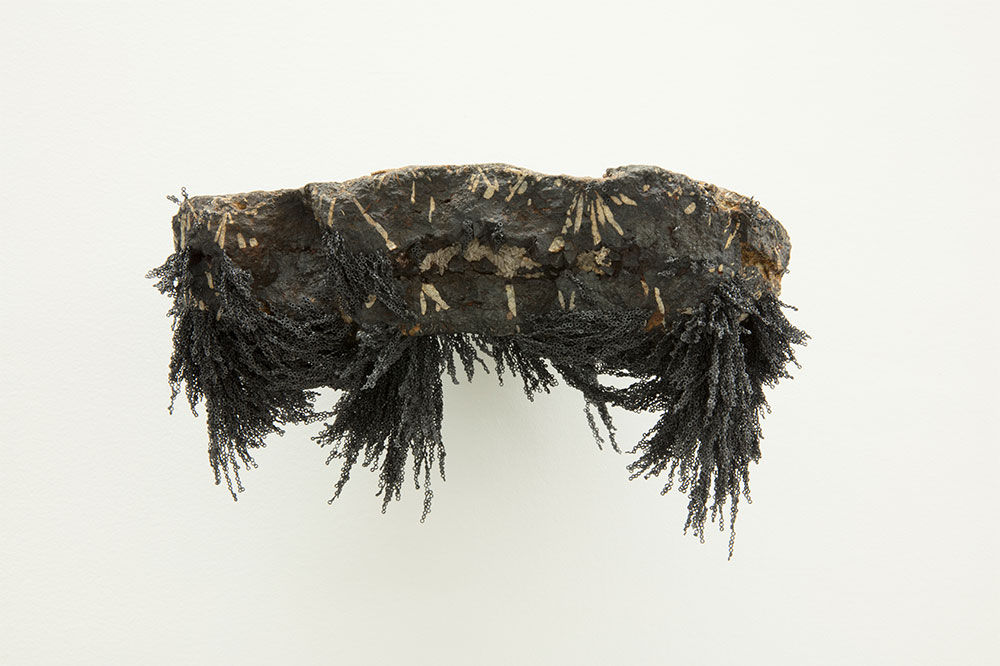
Melissa Dubbin & Aaron S. Davidson
Core (1) , 2017
Courtesy of the artists
Photo : M.Dubbin & A. S. Davidson
-
- John Gerrard
-
Born in 1974, Dublin. Lives in Ireland.
Gerrard produces simulation which explores structures of power and networks of energy that have coincided with the expansion of human endeavour in the past century. The works often feature geographically isolated locations such as the agrarian American Great Plains, the Mojave Desert’s solar plant, remote reaches of the Gobi Desert, or sites of military exercises in Djibouti. These simulations are non-durational, rendered in real time the programmed software unfolds over the course of annual cycles. In these works, documentary foundations find fictional realisations which examine scientific experimentation, industry, sustainability, and conditions of temporality. Recent major presentations include singular works presented outdoors on LED walls at Somerset House, London in 2017; LACMA, Los Angeles in 2018 and in Palm Springs as part of Desert X in 2019. Recent exhibitions include: “Long March Project: Building Code Violations III - Special Economic Zone”, Long March Space, Beijing, China (2018); “Manifesta 12 - The Planetary Garden. Cultivating Coexistence”, Palermo, Italy (2018); “Electricity”, Wellcome Collection, London, England (2017); “John Gerrard: Power, Play”, Ullens Centre for Contemporary Art, Beijing, China (2016); “Exercise”, Kunsthalle Darmstadt, Darmstadt, Germany (2015); “Solar Reverse”, Lincoln Center in association with the Public Art Fund, New York NY (2014). Forthcoming exhibitions include Galway International Arts Festival (2020), and Gwangju Biennale (2020). -
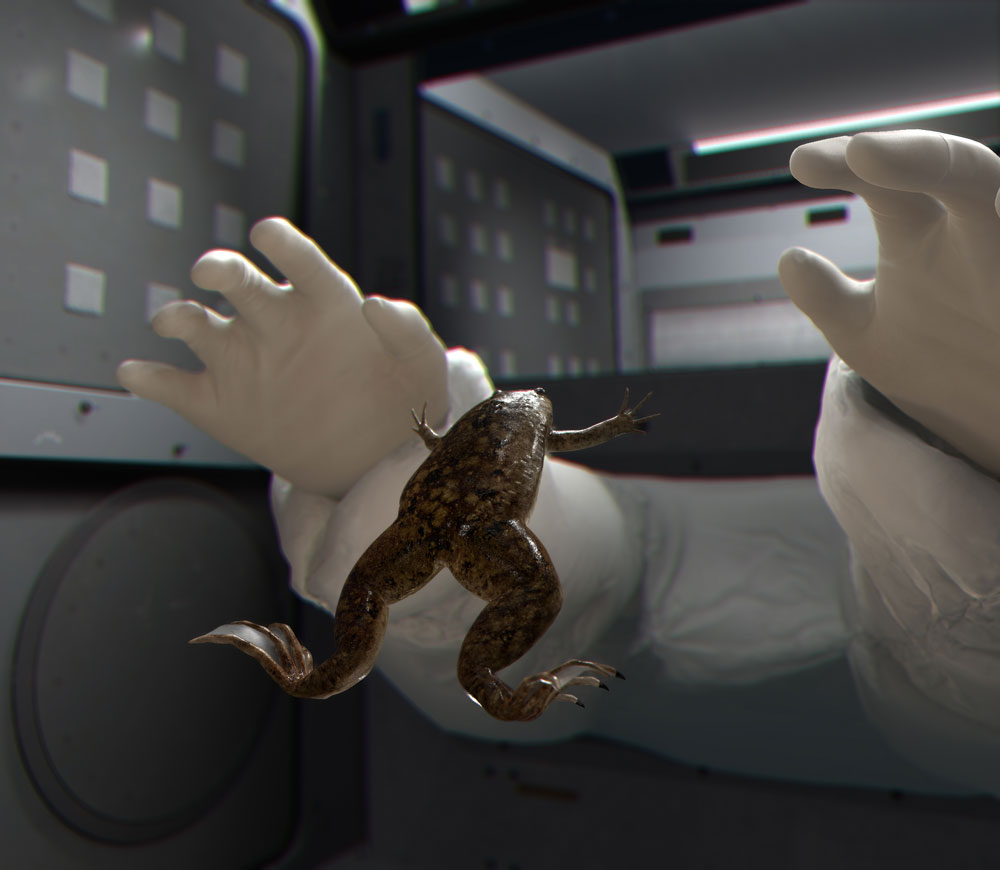
John Gerrard
X. laevis (Spacelab) , 2017
Courtesy of the artist, Thomas Dane Gallery,
and Simon Preston Gallery, New York
-
- Fabien Giraud & Raphaël Siboni
-
Fabien Giraud: Born in 1980, France. Lives in Paris.
Raphaël Siboni: Born in 1981, France. Lives in Paris.
Their collaborative practice reflects on cinema history, philosophy, and technological evolution. Since 2014, they have been working on a long term, three fold project articulating films, performances, and sculptures in an exploration of technological history as an apparatus for our own uprooting. In 2018, the first part of this project entitled “The Unmanned” and composed of eight films was completed. Conceived as a history of computation told in reverse, it tried to go back in history and turn a technology devised to predict the future in a tool for the transformation of our past. Recently, they have initiated “The Everted Capital”, the second part of this project and conceived as performative speculation on the future of value. Their recent solo exhibitions include venues such as MONA, Australia (2018) and Casino-Luxembourg (2018). They have been involved in numerous group shows in venues such as Kunsthalle Wien, Wien, Austria (2019), Museo PallazoRiso, Parlermo, Italy (2015); Lyon Biennale (2015), Liverpool Biennial, United Kingdom(2016), Palais de Tokyo, Paris (2017) or VAC foundation, Venice, Italy (2017). -
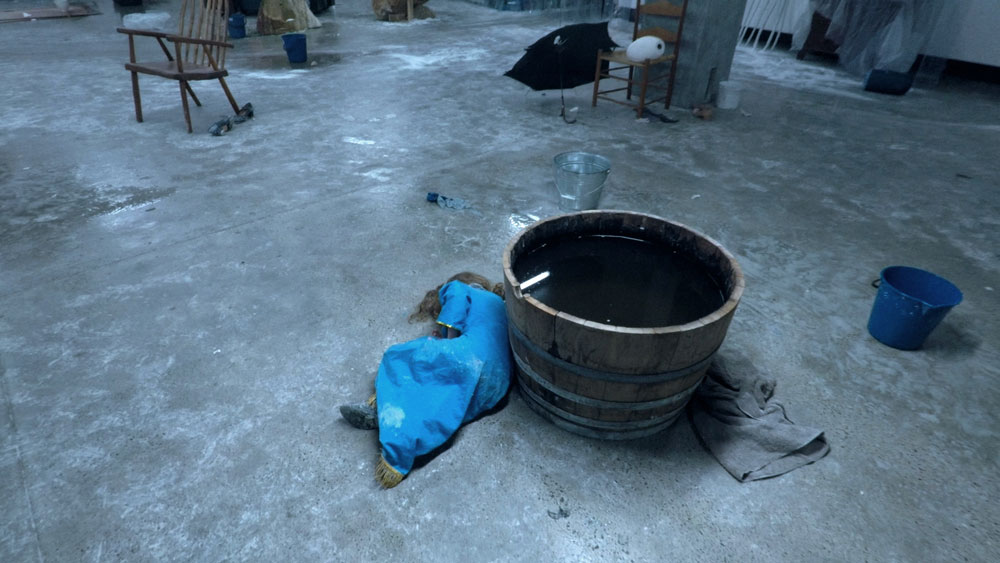
Fabien Giraud –Raphaël Siboni The Everted Capital (1894-7231) Season 2 - Episode 1, 24h, 2018
© Fabien Giraud & Raphaël Siboni
-
- Glass Bead www.glass-bead.org
- Glass Bead is a research platform and a journal concerned with transfers of knowledge across art, science and philosophy, as well as with their practical and political dimensions. It was conceived and is run by Fabien Giraud, Jeremy Lecomte, Vincent Normand, Ida Soulard and Inigo Wilkins (artists, art historians and theorists based in Paris and London). Glass Bead has organised events at MoMA-PS1 (New York), ZKM - Center for Art and Media (Karlsruhe), e-Flux (New York), and Les Laboratoires d’Aubervilliers (Paris). The last issue of Glass Bead's journal, titled Site 1: Logic Gate, the Politics of the Artifactual Mind, was published on November 2017.
-

Glass Bead
Glass Bead's website homepage, 2019
©Glass Bead
Graphic design : Patricia Reed/Leaky Studio
-
- Elizabeth Hénaff
-
Born in 1981, Austin, USA. Lives in New York.
Hénaff is a computational biologist and artist, exploring the porous boundaries between organisms and environments. This inquiry has produced a body of work that ranges from scientific articles in peer-reviewed journals, to design interventions and art exhibits. She has made contributions to understanding how plants respond to the force of gravity, how genome structure changes in response to stress, and most recently has turned her attention to the ubiquitous and invisible microbial component of our environment. She consistently makes the tools – software, wetware, hardware – needed to answer her research questions. Her collaborative works have been shown at the Venice Biennale (2016), the Storefront for Art and Architecture in New York, and the Detroit Science Gallery, among others. She currently holds an Assistant Professor position at the NYU Tandon School of Engineering in New York and teaches courses in biodesign. -
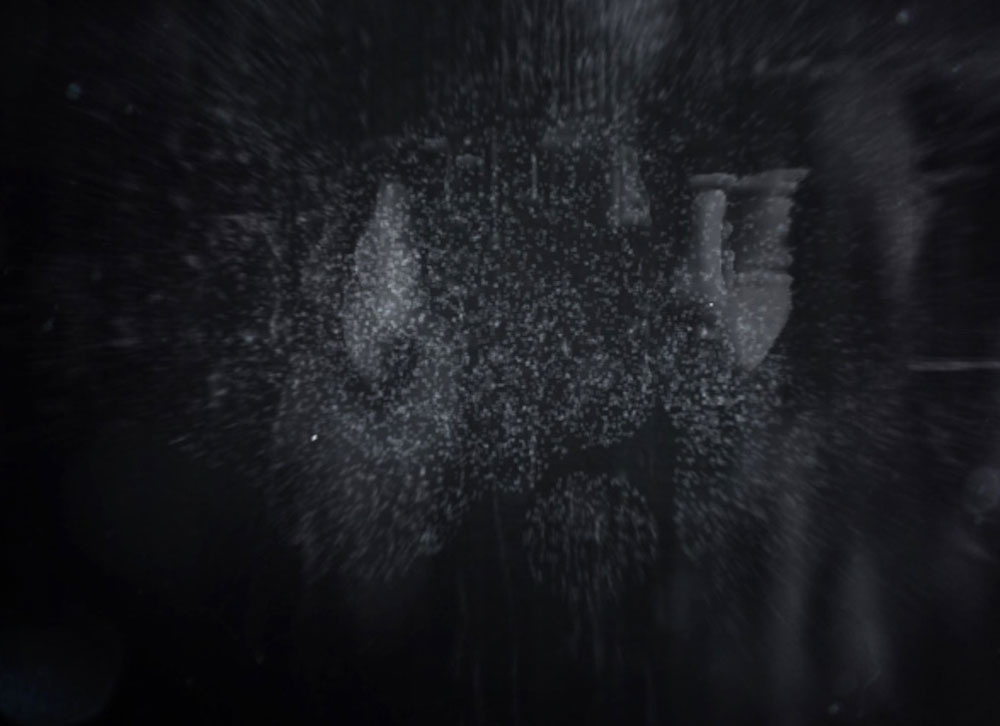
Elizabeth Hénaff in collaboration with Kevin Slavin
Animation by Ben Berman and Chris Woebken.
Holobiont Urbanism, 2016
Courtesy of the artists
-
- Eva L’Hoest
-
Born in 1991, Liège, Belgium. Lives in Brussels.
L'Hoest focuses primarily on the exploration of memory and its strange and minute lingering reality. She tracks the often blurred and non-specific ways in which reminiscence appears. Working on the outer edge of perception where it becomes affect and emotion; starting out with accidents of light like “the operator of a memory who interprets, distorts selects or sometimes saturates and alters the images”. Piece by piece, the artist appropriates contemporary technology to reveal both their nature as prosthesis for capturing the world and their potential as an artistic medium. Her work has appeared in the recent exhibits “Suspended time, Extended space” Casino Luxembourg, Luxembourg; “Fluo Noir” BIP2018, Liege, Belgium; “WHSS” Melange, Cologne; “Mémoires” ADGY Culture Development Co. LtD., Beijing, “Trouble Water” Szczecin Museum, Szczecin, Poland; “Snake Driver” Galerie Albert Baronian, Brussels; “Now Belgium Now” LLS358, Antwerp, Belgium; “Chimera: Marcel Berlanger, Djos Janssens and Eva L’Hoest” Meetfactory, Prague; and “Marres currents #3: Sighseeing” Maastricht, The Netherlands. In 2018, her films were on the calendars of the Rencontres Internationales Paris-Berlin, the Visite Film Festival, and Vidéographie 21. Screenings were held at Carreaux du Temple, Paris, Haus der Kulturen der Welt, Berlin, and Muhka, Antwerp, Belgium. -
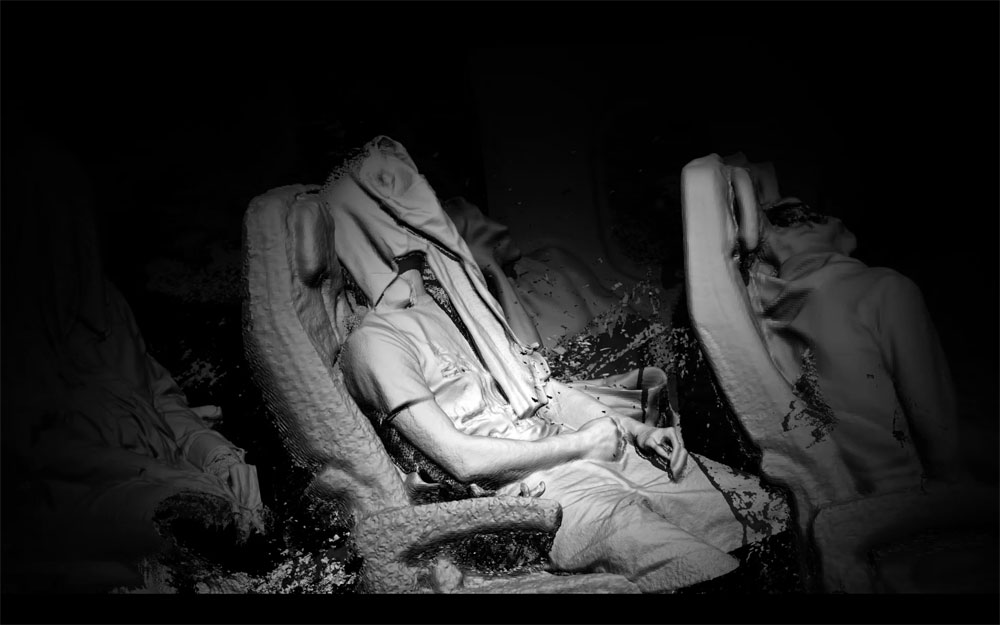
Eva L'Hoest
Under Automata, 2017
Courtesy of the artist
-
- Fernando Ortega
-
Born in 1971, Mexico City. Lives in Mexico City.
Ortega’s practice is largely concerned with poetic, serendipitous moments that arise from the processes of daily life, his pieces take on many forms. For Ortega, art making is an exploration of his own doubts and curiosities about the mysteries he encounters in the world. Through installation, performance, and sound, he modifies spaces, stages actions and works with materials as diverse as spider webs and construction cranes. In his projects, the idea of spectacle generally associated with galleries and museums is transported outside the exhibition space into a day-to-day realm, where the subtleties of the mundane and neglected take the center stage. Many of Ortega’s works balance gracefully between visibility and invisibility: they examine the relative scale and permanence of materials; and explore our human relationship to time and how it informs our experience of the world. His most important solo exhibitions include: “Nota Rosa”, Museo Tamayo, Mexico City (2016); “Fernando Ortega”, Palais de Tokyo, Paris (2012); “Levitación asistida”, Museo de Arte Carillo Gil, Mexico City (2008); “Winter Falls”, Bonner Kunstverein und Artothek, Bonn (2008); “Project Room”, ARCO 04, Madrid (2004); “Resumen”, Fundación Ludwig de Cuba, La Havana (1998). His work has also been a part of the following biennials: 14th Lyon Biennale (2017); 11th SP-Arte – São Paulo International Art Festival, Brazil (2015); 13. Istanbul Bienial (2013); 30a, 27a, and 25a Bienal de São Paulo (2012, 2006, and 2002, respectively); Biennial of the Americas, Denver, United States (2010); Biennale Cuvée 08, Linz, Austria (2008); 50th Venice Biennale (2003). -

Fernando Ortega
Untitled, 2003
Courtesy of the artist and kurimanzutto, mexico city
-
- Sean Raspet
-
Born in 1981, Washington D.C. Lives in Detroit.
Raspet’s works have often consisted of liquid chemical formulations of artificial flavour and fragrance molecules. More recently his works have involved food, nutrition, human metabolism and human cellular development via stem cells. He is a flavour and fragrance chemist and co-founder of the algae-based food company Nonfood. His practice prioritises movement away from the specialised art economy, in favour of endeavours that circulate in the economy-at-large, utilising prevailing modes of production – such as mass-produced products and proprietary molecular structures. Raspet’s work has been exhibited at Artist’s Institute, New York, Museum of Contemporary Art, Chicago; Museum of Contemporary Art, Detroit; de Young Museum, San Francisco; Jessica Silverman Gallery, San Francisco; M Woods Museum, Bejing; Societé, Berlin; the 9th Berlin Biennale; Bridget Donahue, New York; Sculpture Center, New York; and The Kitchen, New York, among others. -
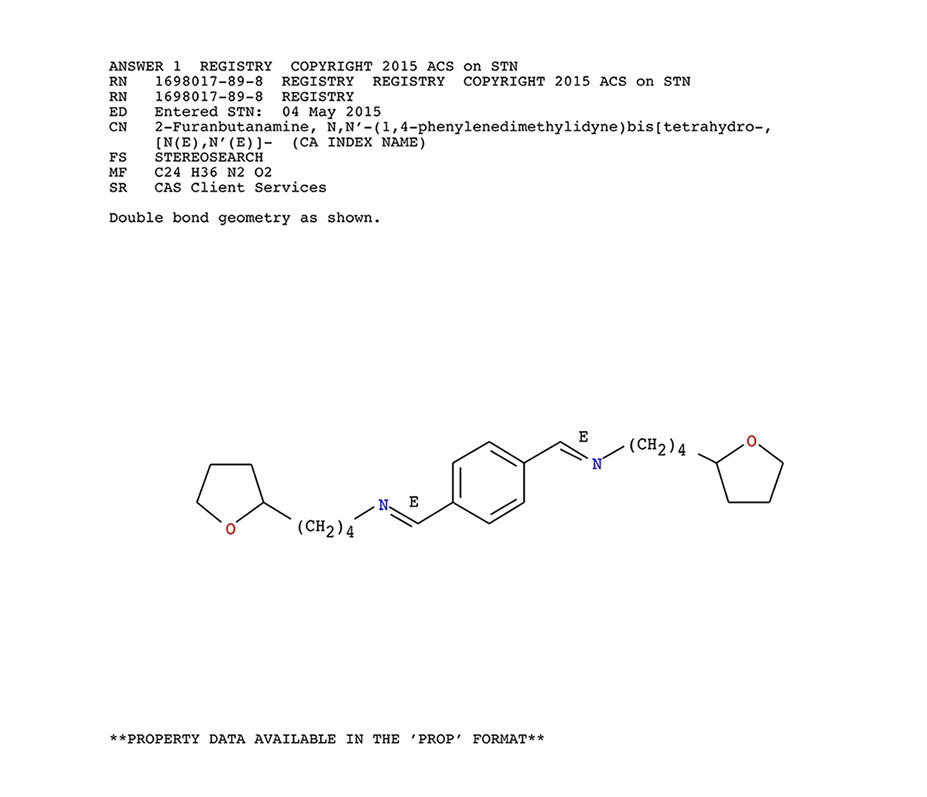
Sean Raspet
2-furanbutamine, N,N’-(1,4-phenylenedimethylidyne)bis
[tetrahydrohydro-, [N(E),N’ (E)]-from: New Structures:
Azomethine Variations, 2015
Courtesy of the artist, RRose Editions, and Chemical Abstract Services
-
- Lili Reynaud-Dewar
-
Born in 1975, France. Lives in Rome, Grenoble.
Reynaud-Dewar dances, writes, talks, teaches, makes movies, video installations, furniture, sculptures, feminist magazines, performances, alone or with her friends, students, family. In 2009 she co-founded, with Dorothée Dupuis and Valérie Chartrain, the art and entertainment feminist publication Petunia. She has been a professor at Haute École d'Art et de Design in Geneva since 2010. In 2015, she published a collection of her writings “My Epidemic, texts on my work and the work of other artists” with Paraguay Press. She is part of the group Wages For Wages Against, a campaign launched by Ramaya Tegegne, that promotes fees for artists as well as a less discriminating art world, in Switzerland and elsewhere. She lives and works in Rome and Grenoble, where she has initiated the project Maladie d'Amour in her studio in 2015. Maladie d'Amour is a social and emotional experiment that brings a small group of young people around one-night long exhibitions featuring Reynaud-Dewar's artist friends from Paris, Geneva, Vienna and elsewhere. -
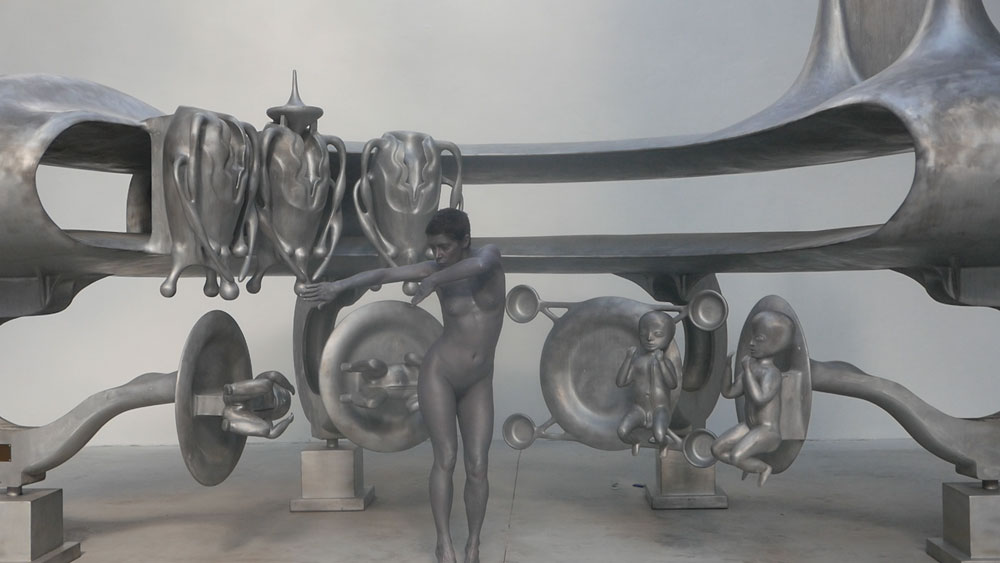
Lili Reynaud-Dewar
TEETH GUMS MACHINES FUTURE SOCIETY (ONE BODY,
TWO SOULS, BRUNO GIRONCOLI), 2017
Courtesy of the Artist and Clearing
-
- Pamela Rosenkranz
-
Born in 1979, Switzerland. Lives in Zurich.
Rosenkranz’s work addresses the shifting philosophical and scientific meanings of the “natural” and the “human” during the time of the Anthropocene (the geological epoch marked by the impact of human activities on the ecosystem). Rosenkranz deploys a palette of patented icons like branded water bottles, JPEGs of International Klein Blue, and Amazon, the largest retailer to date in comparison to its inspiration, the Amazon as river and rainforest. By challenging the distinction between the natural and the artificial, Rosenkranz addresses the evolutionary and material dynamics underlying perception, art, and culture. Recent solo exhibitions include Foundazione Prada, Milan (2017), Venice Biennale (2015), Centre d’Art Contemporain, Geneva and Kunstverein Braunschweig, Braunshweig (2010), and more. Recent major group shows include Louisiana Museum of Modern Art, Copenhagen, Kunsthalle Mainz, Mainz (2017), Karma International , Zurich (2014), MoMA PS1, New York (2013), Berlin Biennale and Manifesta (2008). -
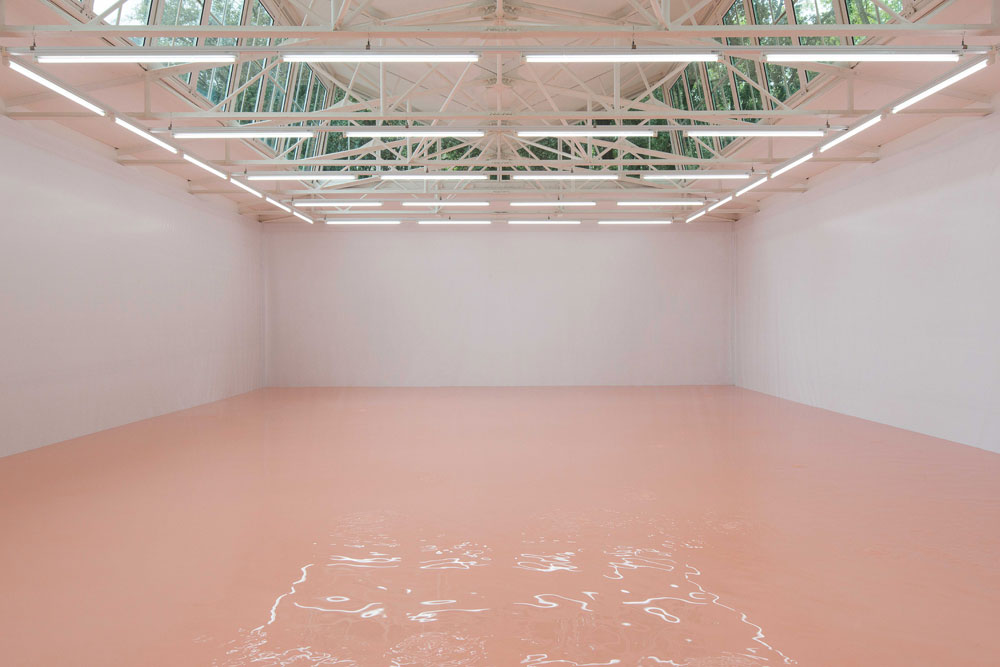
Pamela Rosenkranz
Our Product, 2015
Courtesy the artist and Pro Helvetia, Karma International, Zurich,
Miguel Abreu Gallery, New York, and Sprüth Magers
Photo: Marc Asekhame
-
- Tino Sehgal
-
Born in 1976, London. Lives in Berlin.
Studied Berlin's political economy and dance at the Folkwang University of the Arts in Essen, Germany. His work has been shown in numerous solo exhibitions around the world in recent years, including the most notable ones at the Solomon R. Guggenheim Museum in New York (2010) and in the Turbine Hall, Tate Modern, London (2012); as well as those organised by The Van Abbemuseum, in Eindhoven (2004), the Stedelijk Museum, Amsterdam (2006, 2015), the Institute of Contemporary Arts, London (2005, 2006, 2007), the Galleria d'Arte Moderna, in Milan (2008), the Walker Art Center in Minneapolis (2007), the MMK in Frankfurt (2007), the Aubette 1928, with the Museums of the City of Strasbourg (2010), the Kunstnernes Hus, in Oslo (2011), the Ullens Center for Contemporary Art in Beijing (2013), the Pinacoteca de São Paulo (2014), the CCBB in Rio de Janeiro (2014) and the Martin Gropius Bau in Berlin (2015). -
Tino Sehgal
Ann Lee , 2011
Courtesy of Ishikawa Foundation, Okayama
-
- Mika Tajima
-
Born in 1975, Los Angeles. Lives in New York.
Tajima investigates how the built environment (including information spaces) shape our bodily actions. Her recent work focuses on contemporary technologies developed to control and affect the body - techniques that shape bodily experience of time and space, taking the human body as a target of power. Recipient of New York Artadia Award in 2017. Selected recent solo exhibitions include “MIKA TAJIMA: ÆTHER” Borusan Contemporary, Istanbul (2018), “After Life” Wadsworth Atheneum Museum of Art, Hartford and “Meridian (Gold)” Sculpture Center, New York (2017), “Emotion Commune” Protocinema, Istanbul and “EMBODY” 11R, New York (2016), “Total Body Conditioning” Art in General, New York (2014). Selected recent group exhibitions include “COLORI” Castello di Rivoli and GAM, Torino and “All Watched Over by Machines of Loving Grace” Palais de Tokyo, Paris (2017), “Roppongi Crossing” Mori Art Museum, Tokyo (2013), and more. -
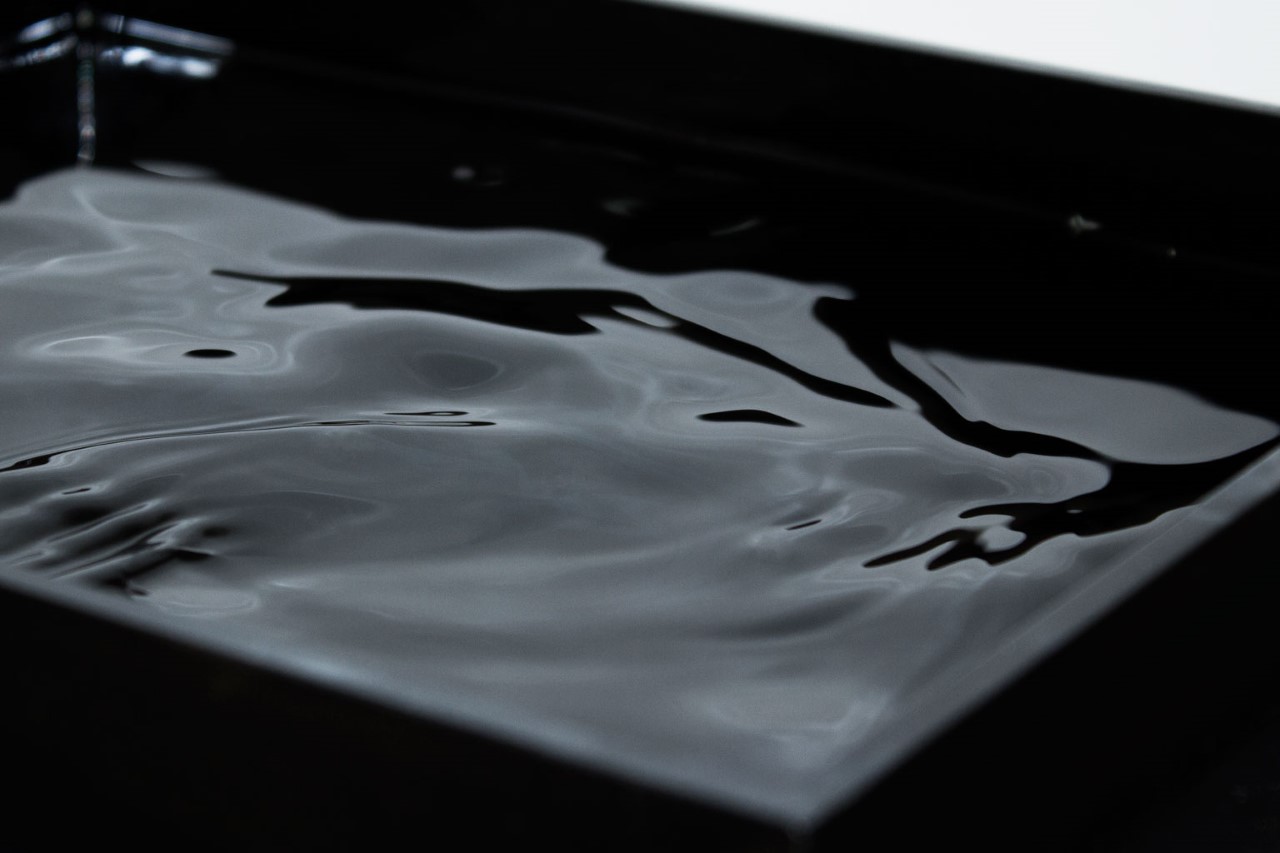
New Humans, 2019 (detail)
Generative algorithm using machine learning (GAN, T-SNE) and
fluid simulation (Navier Stokes), user profile data caches (DNA, fitness, and dating),
Ferrofluid, custom electromagnet matrix, custom PCB
control system, computer, steel, wood, aluminum
©Mika Tajima Courtesy of TARO NASU and Okayama Art Summit Executive committee
Collection of Ishikawa Foundation Okayama